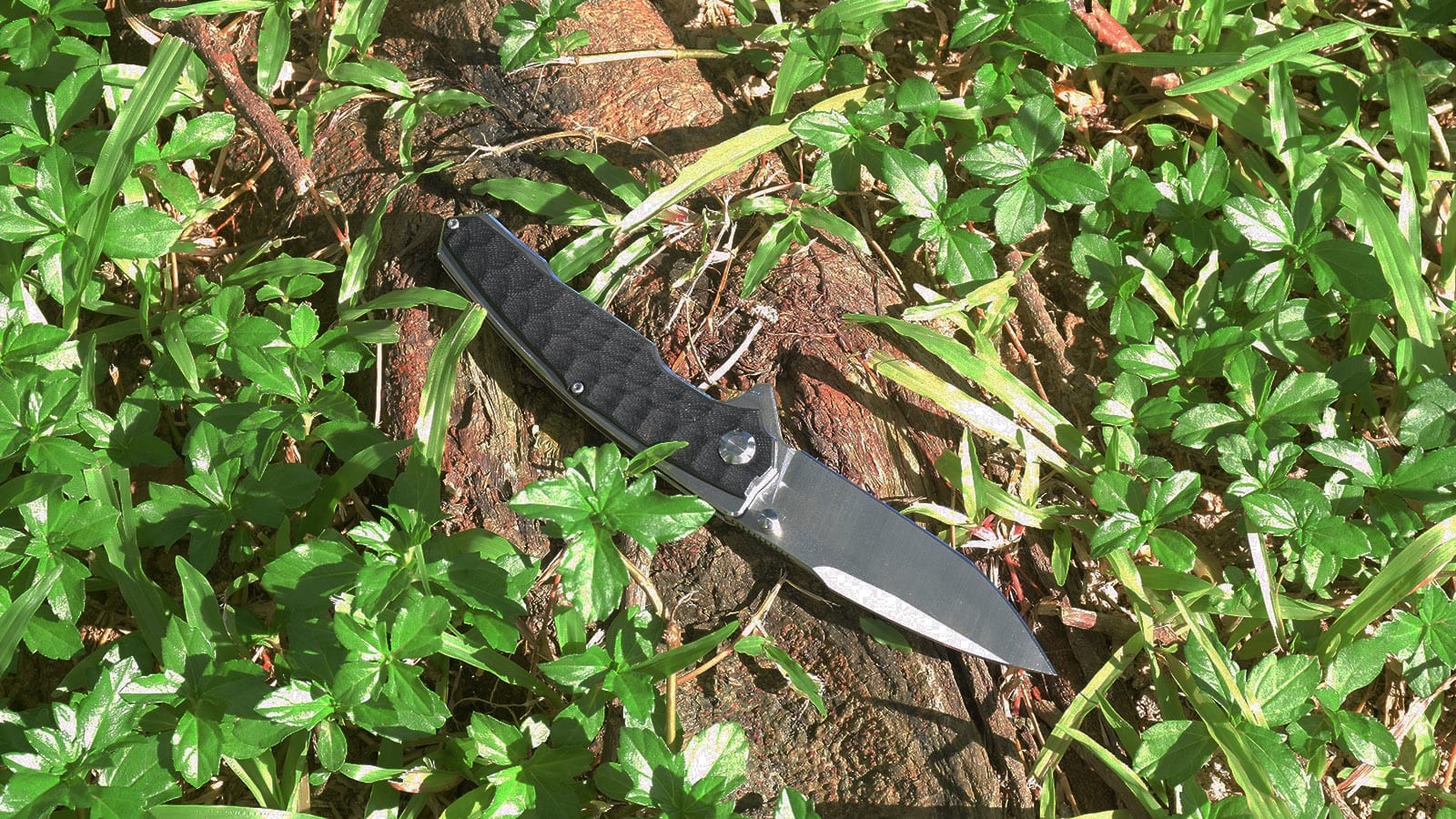
Fickknivar är mångsidiga verktyg som har varit en häftklammer i det dagliga bärandet (EDC) i generationer. Oavsett om du är en friluftsentusiast, en gör-det-själv-hobbyist eller bara någon som uppskattar det praktiska i att ha ett blad till hands, är det avgörande att veta hur du säkert stänger din fickkniv. Denna omfattande guide kommer att leda dig genom processen att stänga olika typer av fickknivar, vilket säkerställer att du kan hantera ditt verktyg med tillförsikt och omsorg. Att förstå den rätta tekniken för att stänga en fickkniv handlar inte bara om bekvämlighet; det är en fråga om säkerhet. Felaktig hantering kan leda till olyckor, och ingen vill sluta med ett otäckt snitt från ett verktyg de litar på. Genom att behärska konsten att stänga din fickkniv kommer du inte bara att skydda dig själv utan också förlänga knivens livslängd genom att förhindra onödigt slitage. I den här artikeln kommer vi att utforska de olika typerna av fickknivslås, steg- stegvisa instruktioner för att stänga varje typ och viktiga säkerhetstips att tänka på. Oavsett om du är en erfaren kniventusiast eller ny i världen av fällknivar, kommer den här guiden att utrusta dig med kunskap och färdigheter för att hantera din fickkniv som ett proffs.
Varför är det viktigt att veta hur man stänger en fickkniv?
Innan vi dyker in i detaljerna, låt oss överväga varför denna färdighet är så avgörande:
- Säkerhet: Korrekt stängningsteknik förhindrar oavsiktliga skärsår och skador.
- Knivens livslängd: Korrekt hantering bevarar bladet och låsmekanismen.
- Förtroende: Att förstå ditt verktyg leder till mer effektiv och bekväm användning.
- Laglighet: I vissa områden kan öppna knivar vara begränsade, vilket gör att korrekt stängning är nödvändig.
Låt oss nu utforska de olika aspekterna av att stänga en fickkniv säkert och effektivt.
Vilka är de olika typerna av fickknivslås?
Att förstå låsmekanismen är avgörande för att säkert stänga din fickkniv. Här är några vanliga typer du kan stöta på:
- Liner Lock
- Ramlås
- Lockback
- Slip Joint
- Axellås
- Knapplås
- Kompressionslås
Var och en av dessa låstyper kräver ett lite annorlunda tillvägagångssätt när du stänger kniven. Låt oss dyka in i detaljerna för var och en.
Hur stänger du en liner Lock-fickkniv?
Liner lock knivar är bland de vanligaste typerna av fällknivar. Så här stänger du en på ett säkert sätt:
- Håll knivhandtaget stadigt i din dominerande hand, med bladet pekande bort från dig.
- Använd tummen för att skjuta linerlåset åt sidan och koppla bort det från bladtången.
- Medan du håller trycket på låset, börja försiktigt att fälla tillbaka bladet i handtaget.
- När bladet börjar röra sig, ta bort tummen från låset och stäng bladet med baksidan av kniven.
- Se till att dina fingrar är fria från bladets väg när det stängs.
Kom ihåg att foderlåset är ett tunt stycke metall, så använd ett konstant tryck för att frigöra det helt innan du försöker stänga bladet.
Vad är det rätta sättet att stänga en ramlåskniv?
Ramlåsknivar, även kända som integrallåsknivar, fungerar på samma sätt som linerlås men med en kraftigare mekanism. Här är processen:
- Fatta handtaget säkert och håll bladet riktat bort från dig.
- Använd tummen för att trycka ramlåset åt sidan och frigöra bladet.
- Börja vika bladet samtidigt som du håller trycket på låset.
- När bladet rör sig, flytta tummen bort från låset för att undvika klämning.
- Stäng bladet med ryggraden eller baksidan av bladet.
Ramlås kan vara styvare än linerlås, så du kan behöva utöva mer tryck för att frigöra dem helt.
Hur ska du stänga en låskniv?
Lockback-knivar har en distinkt mekanism placerad vid handtagets ryggrad. Så här stänger du en:
- Håll stadigt i knivhandtaget, bladet pekar bort.
- Leta reda på låsöppningen på baksidan av handtaget.
- Tryck ner låset med tummen.
- Medan du håller trycket, börja vika bladet med din andra hand.
- När bladet börjar röra sig kan du lossa låset.
- Styr bladet mjukt till stängt läge.
Låsmekanismer är kända för sin styrka, så se till att du utövar tillräckligt med tryck för att helt frigöra låset innan du stänger.
Vad är tekniken för att stänga en Slip Joint Pocket Kniv?
Slipfogknivar, vanliga i traditionella fickknivar, har ingen låsmekanism. Så här stänger du dem säkert:
- Håll knivhandtaget säkert i din dominerande hand.
- Placera tummen på baksidan av bladet nära vridpunkten.
- Applicera ett lätt tryck för att övervinna bladets motstånd.
- Vik försiktigt in bladet i handtaget, håll fingrarna borta från stängningsbanan.
- Bladet kommer att "snäppa" på plats när det är helt stängt.
Var extra försiktig med slipfogknivar, eftersom de kan stängas oväntat om tryck appliceras på baksidan av bladet.
Hur stänger du en Axis Lock-fickkniv på ett säkert sätt?
Axis låsknivar, populära av Benchmade, har en unik stängningsmekanism. Här är processen:
- Ta ett stadigt tag i handtaget med bladet pekande bort från dig.
- Använd tummen och pekfingret för att dra tillbaka axelstången på båda sidor om handtaget.
- Medan du håller stången tillbaka, börja vika bladet med din andra hand.
- När bladet börjar röra sig kan du släppa axelstången.
- Styr bladet mjukt till stängt läge.
Axellåset möjliggör smidig, enhandsmanövrering, men var alltid uppmärksam på bladets väg när du stänger den.
Vad är processen för att stänga en fickkniv med knapplås?
Knapplåsknivar har en tryckknappsmekanism för frigöring. Så här stänger du dem:
- Håll knivhandtaget säkert, bladet pekar bort.
- Leta reda på knapplåset, vanligtvis på handtagets sida.
- Tryck och håll ned knappen för att koppla ur låset.
- Medan du håller knappen intryckt, börja vika bladet.
- När bladet börjar röra sig kan du släppa knappen.
- Styr bladet försiktigt till stängt läge.
Knapplås är intuitiva att använda men kräver uppmärksamhet för att säkerställa att låset är helt urkopplat innan det stängs.
Hur stänger du en kompressionslåskniv ordentligt?
Kompressionslåsknivar, som ofta finns i Spyderco-modeller, har en unik stängningsmetod:
- Ta ett stadigt tag i handtaget med bladet pekande bort.
- Leta reda på kompressionslåset på handtagets ryggrad.
- Använd tummen eller pekfingret för att trycka låset åt sidan.
- Medan du håller trycket på låset, börja vika bladet.
- När bladet rör sig, flytta bort fingret från låset.
- Styr bladet mjukt till stängt läge.
Kompressionslås är starka och säkra, men kan kräva lite övning för att fungera smidigt.
Vilka är några allmänna säkerhetstips för att stänga fickknivar?
Oavsett låstyp, tänk på dessa säkerhetstips:
- Håll alltid bladet riktat bort från dig själv och andra.
- Se till att dina fingrar är fria från bladets väg när du stänger.
- Stäng kniven långsamt och medvetet, skynda aldrig på processen.
- Rengör och underhåll din kniv regelbundet för att säkerställa smidig drift.
- Om kniven känns "klibbig" eller svår att stänga, låt en professionell inspektera den.
Hur kan du underhålla din fickkniv för smidig stängning?
För att hålla din fickkniv i toppskick:
- Rengör bladet och svängområdet regelbundet med en mjuk trasa.
- Applicera en liten mängd knivolja på tappen och låsmekanismen.
- Kontrollera om det finns lösa skruvar eller delar och dra åt vid behov.
- Förvara din kniv på en torr plats för att förhindra rost och korrosion.
- Slipa bladet regelbundet för att bibehålla dess prestanda.
Vad ska du göra om din fickkniv är svår att stänga?
Om du har svårt att stänga din kniv:
- Inspektera pivotområdet för skräp eller ansamlingar.
- Kontrollera om låsmekanismen fungerar korrekt.
- Leta efter synliga skador eller slitage på bladet eller handtaget.
- Försök att rengöra och smörja kniven enligt beskrivningen ovan.
- Om problemen kvarstår, kontakta en professionell knivtillverkare eller tillverkaren.
Hur påverkar olika bladstilar stängningsprocessen?
Olika bladstilar kan påverka hur du stänger din fickkniv:
- Drop Point Blades: Generellt lätt att stänga, med en enkel vikningsrörelse.
- Tanto Blades: Kan kräva extra försiktighet på grund av den kantiga spetsen.
- Fårfotsblad: Ofta lättare att stänga säkert på grund av den rundade spetsen.
- Wharncliffe Blades: Liknar sheepsfoot, men se upp för den skarpa, raka kanten.
Var alltid medveten om bladets form när du stänger för att undvika eventuella klämpunkter eller vassa kanter.
Vilken roll spelar hanteringsmaterial för att stänga en fickkniv?
Handtagsmaterialet kan påverka ditt grepp och den totala stängningsupplevelsen:
- G10 Handtag: Ger utmärkt grepp, även när det är blött.
- Trähandtag: Kan kräva en skonsammare beröring för att undvika slitage med tiden.
- Metallhandtag: Kan vara hala, så se till att ha ett stadigt grepp när du stänger.
- Micarta-handtag: Erbjuder en balans mellan grepp och hållbarhet.
Anpassad vikkniv med rosenträhandtag och fickklämma ger ofta ett bekvämt och säkert grepp vid stängning.
Hur påverkar knivstorleken stängningstekniken?
Storleken på din fickkniv kan påverka hur du stänger den:
- Små knivar (under 3 tum): Kan kräva mer precision på grund av begränsat handtagsutrymme.
- Medelstora knivar (3-4 tum): Ger i allmänhet en bekväm balans för stängning.
- Stora knivar (över 4 tum): Kan behöva två händer för säker och kontrollerad stängning.
Välj alltid en knivstorlek som du kan hantera bekvämt och säkert.
Vilka är några vanliga misstag att undvika när man stänger en fickkniv?
Var medveten om dessa vanliga fel:
- Påskyndar stängningsprocessen.
- Frigör inte låset helt innan du försöker stänga.
- Placera fingrarna i stängningsbladets väg.
- Använder för mycket kraft när du stänger en envis kniv.
- Försummar regelbundet underhåll, vilket leder till svår stängning.
Hur kan du lära andra att stänga en fickkniv på ett säkert sätt?
Om du instruerar någon om knivsäkerhet:
- Demonstrera processen långsamt och tydligt.
- Förklara vikten av varje steg.
- Övervaka deras första försök noga.
- Betona säkerhet och tålamod framför hastighet.
- Uppmuntra frågor och ge konstruktiv feedback.
Anpassad edc vikkniv med trähandtag och linerlås kan vara bra för undervisning, eftersom de ofta har smidig verkan och tydliga låsmekanismer.
Slutsats: Bemästra konsten att stänga din fickkniv
Att stänga en fickkniv på ett säkert sätt är en viktig färdighet för alla knivägare. Genom att förstå de olika låstyperna, öva på rätt teknik och underhålla din kniv, säkerställer du säker och effektiv användning av ditt verktyg. Kom ihåg dessa nyckelpunkter:
- Identifiera alltid din knivs låstyp innan du försöker stänga den.
- Håll fingrarna borta från bladets väg.
- Håll ett stadigt grepp om handtaget under hela stängningsprocessen.
- Regelbunden rengöring och underhåll gör att din kniv fungerar smidigt.
- Vid tveksamhet, konsultera tillverkarens instruktioner eller en fackman.
Med övning och uppmärksamhet på detaljer blir det en självklarhet att stänga din fickkniv, vilket gör att du kan använda ditt verktyg med tillförsikt och säkerhet. Oavsett om du använder en Anpassad 8cr13mov fickkniv i rostfritt stål med g10-handtag eller någon annan typ, kommer dessa färdigheter att tjäna dig väl i dina vardagliga äventyr.




